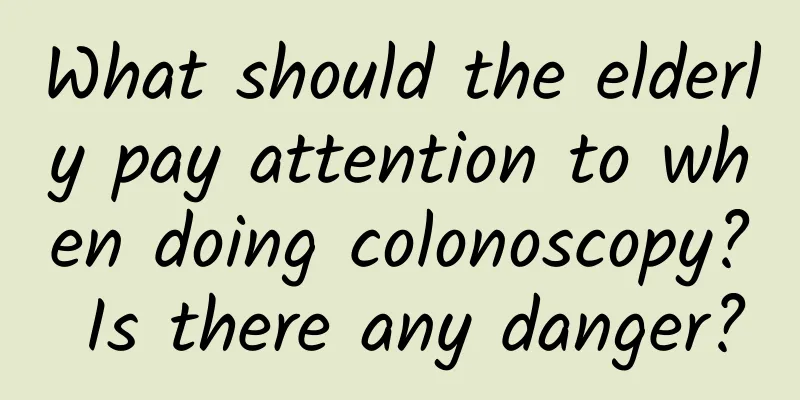Why does my thumb go numb?

|
Fingers are arguably the part of our body we use most frequently. Whether we are infants or adults, our daily activities cannot be carried out without the help of fingers. Since our fingers are in contact with objects for a long time, there is a high possibility that our fingers will develop diseases. The most common symptom is peeling of the entire finger or various types of herpes on the hands. Severe symptoms include numbness of the thumb. So what causes numbness in the thumb? Finger tingling refers to a tingling sensation in the fingers. The sensory nerves of the fingers are derived from the nerve roots of the cervical spinal cord, forming the brachial plexus in the cervical axilla, and then dividing into the radial nerve, median nerve, ulnar nerve, etc., passing through the upper arm and forearm, becoming peripheral nerves and distributed to the hands and fingers. The causes of the disease are as follows: Peripheral neuritis The peripheral nerves of the fingers may cause inflammatory reactions due to poisoning, infection, vitamin B deficiency, blood supply disorders in the fingers, etc., which may cause numbness and pain in the fingers. Most of the time, it occurs at the same time on the fingers of both hands, and the disease can usually be recovered after the cause is eliminated. Treatments such as oral or injection of vitamin B1, acupuncture, etc. can promote recovery. Ulnar nerve damage When the ulnar nerve in the forearm and upper arm is injured, compressed, or develops a tumor, it can cause numbness and pain in the little finger and ring finger on the same side and partial finger movement disorders. The ulnar nerve groove at the back of the elbow is more susceptible to injury or compression. Most cases will gradually recover in about half a year after the injury, but if there is a tumor, complete rupture or severe pressure, surgical treatment is often required. Median nerve damage The median nerve in the forearm and upper arm may cause numbness and pain in the palm, thumb, index finger, and middle finger due to trauma, tumor, compression, etc. The wrist is most vulnerable to injury or pressure, which is called carpal tunnel syndrome. The treatment principles are the same as before. Radial nerve damage The radial nerve is more susceptible to damage in the middle and lower outer parts of the upper arm, resulting in numbness and pain on the back of the thumb and index finger and drooping of the fingers and wrist. The treatment principles are the same as before. Brachial plexus damage Lesions or injuries in the axilla or anterior neck may cause mixed symptoms of complete or partial damage to the ulnar, median, and radial nerves. The treatment principles are the same as before. Cervical Spondylosis Due to compression of the cervical nerve roots or cervical spinal cord by cervical vertebrae hypertrophy or cervical disc degeneration and protrusion, numbness and pain in unilateral or bilateral fingers may occur, especially in the right fingers. Sometimes the entire arm to the shoulder may be numb and painful, making it difficult to hold a pen or knit a sweater. This is consistent with the condition of cervical spondylosis. The letter says that when the hands are hanging down without exerting force, there will be no numbness or pain in the hands. It means that the right upper limb is not compressed after relaxation and the lesion is relatively mild. Precautions: Although the condition may improve for some people, there will be no improvement for some people, especially when they reach middle age or old age. This is because numbness in one thumb of middle-aged and elderly people is often an ominous sign of stroke. When encountering this situation, you should not be careless. You should go to the hospital to check your blood pressure, blood lipids, blood sugar and fundus. It is best to ask a neurologist to do a detailed examination to prevent problems before they occur. Hazards Introduction: Finger numbness is an independent disease caused by damage to the limb motor nerves, mostly caused by hemiplegia due to stroke, diabetes, neuritis, cervical spondylosis, lumbar spondylosis, etc. The tiny blood vessels around the motor nerve fibers are blocked, compressing the motor nerve fibers and causing serious damage to the motor nerve fibers. The conduction ability and conduction speed of nerves decrease, resulting in numbness of hands and feet. In severe cases, it may develop into painful symptoms such as limb paralysis and muscle atrophy. |
>>: What causes little finger paralysis?
Recommend
Grass ginseng pictures and effects
Grass ginseng is actually artificially grown wild...
Xiao Cheng Qi Tang recipe
In China's traditional history, Chinese medic...
How to reduce the fat on the side of the belly
The belly is the place where fat is most easily a...
Children's Yanbian Granules
Although many mothers prefer physical therapy whe...
Symptoms of drinking fake alcohol
Fake liquor is extremely harmful to human health....
Knowledge of Traditional Chinese Medicine Moxibustion
Traditional Chinese medicine has been passed down...
Will burns on the face leave scars?
It is said that "appearance is justice"...
White hair in teenagers may be hereditary
Before the age of 40, our hair is all black, beca...
Eating pears in autumn is the most nourishing way to moisturize the lungs and relieve dryness
Pear is one of the most common fruits in our live...
One side of the buttocks and thighs are sore
The daily condition of the body depends on the am...
How to deal with sulfuric acid ant bites
Many people have not heard of sulfate ants. This ...
Method of moving the gestational sac upward
In the early stages of pregnancy, women may disco...
Can sugar toothpaste and honey whiten your skin?
Whenever summer comes, people are afraid of being...
Why do my hands go numb when I sleep?
If you feel something when you sleep, you must be...
Plantain for Gout
Gout is a disease that is very harmful to human h...









